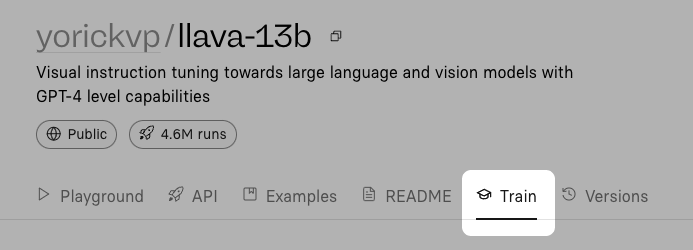Use a model as a training destination
Learn about models as training destinations for fine-tunes.
Table of contents
Fine-tuning lets you take an existing model and train it with your own data to create a new model that is better suited to a specific task. Whenever you create a new fine-tune, you must specify a destination model. This is a model that you create, and it will be updated with the results of your fine-tuning process. The destination model can be a new model, or an existing model that you’ve already fine-tuned.
This guide covers how to create and specify destination models for fine-tuning.
Option 1: Create a model from the Train tab
Every trainable model has a “Train” tab with a form that lets you create a new fine-tune of that model. For example, check out the training pages for models like Flux or LLaVA:

The training form asks you to choose a destination model. You can select an existing model as a destination, or create a new model.
Option 2: Create a model on the web
If you want to create a destination model without training it right away, you can create a model manually from the web at replicate.com/create.
Option 3: Create a model with the API
You can use the HTTP API to create a new model programmatically whenever you need a new destination for a training.
Here’s an example using cURL:
curl -s -X POST \
-H "Authorization: Token $REPLICATE_API_TOKEN" \
-d '{"owner": "alice" "name": "my-model", "description": "An example model", "visibility": "public", "hardware": "cpu"}' \
https://api.replicate.com/v1/modelsYou can also use Replicate’s JavaScript and Python clients to create models with the API.
Option 4: Using an existing model
You don’t have to create a new model every time you fine-tune. You can instead use the same destination model multiple times, and the resulting fine-tunes will be added to the destination model as different “versions”. You can think of the destination model as a collection of fine-tunes, in the form of model versions.
You only need to create the destination model once. When a new training is created, the resulting fine-tune is automatically pushed as a new version to the destination model.